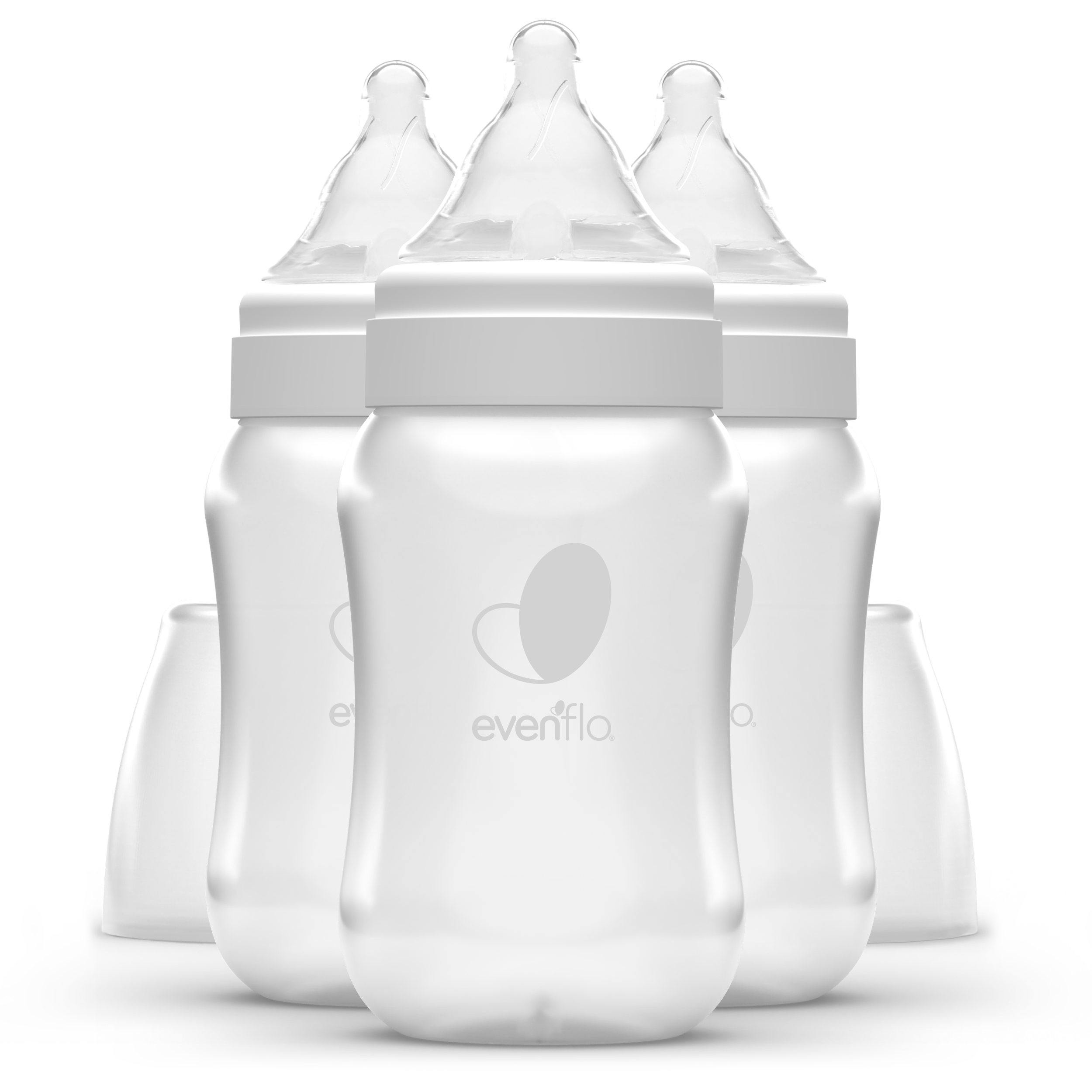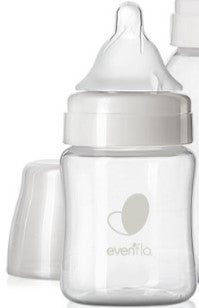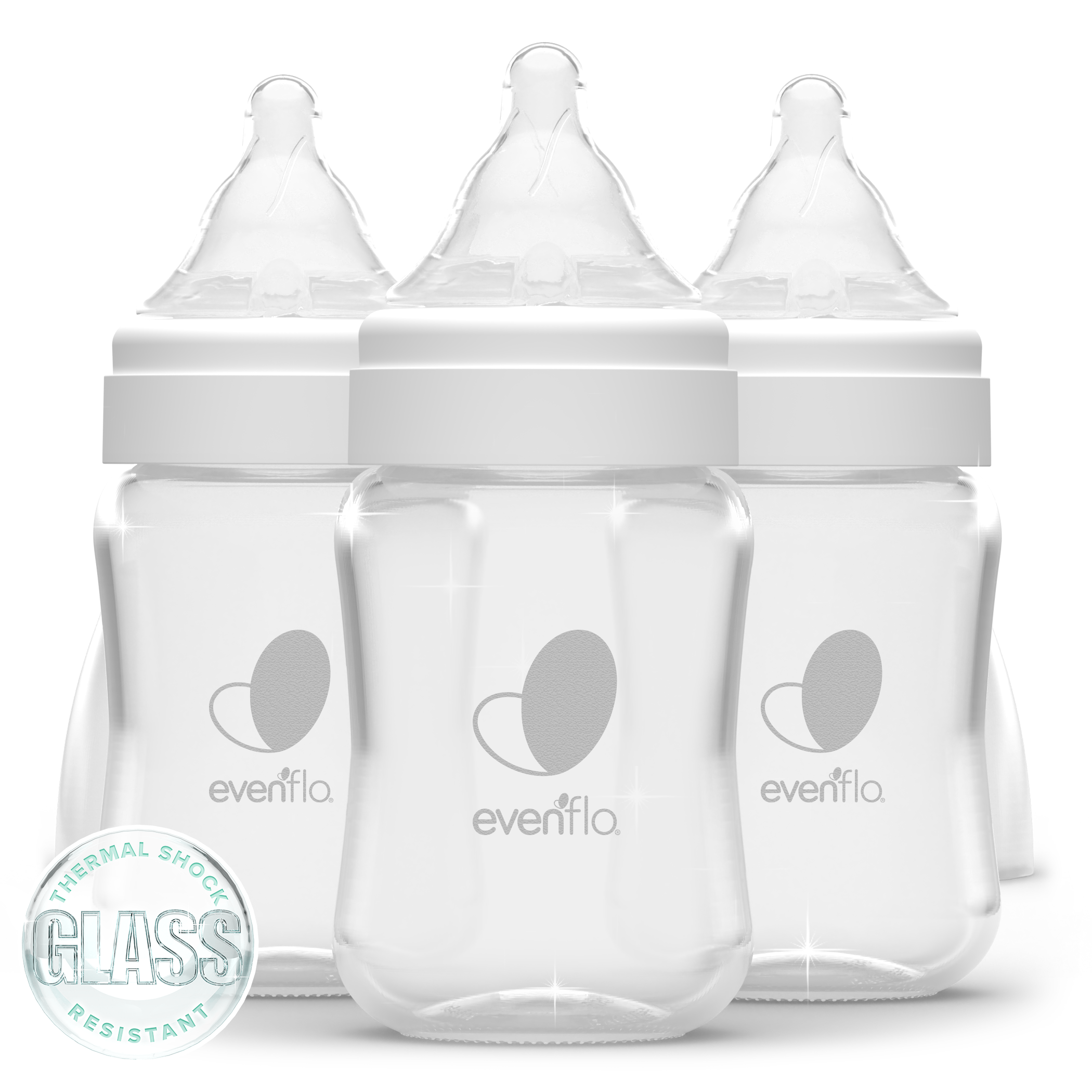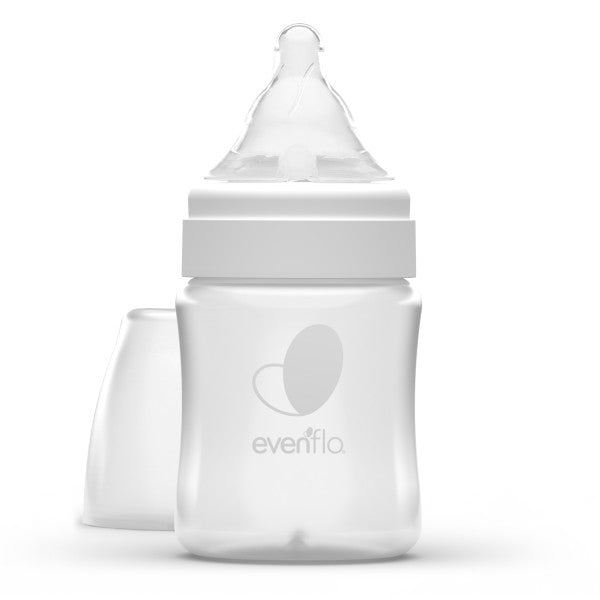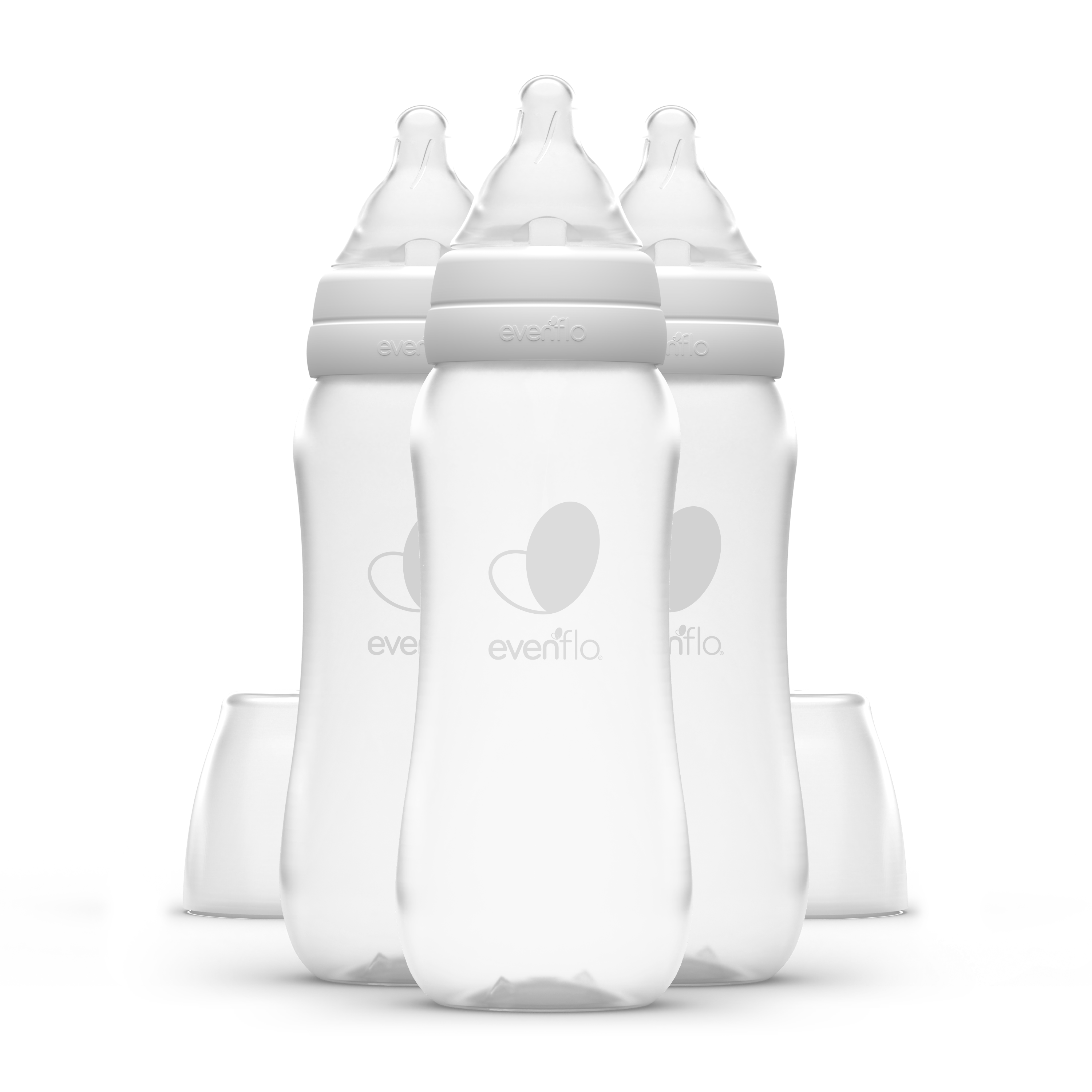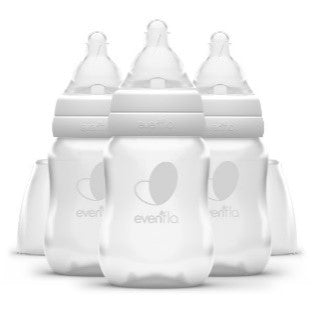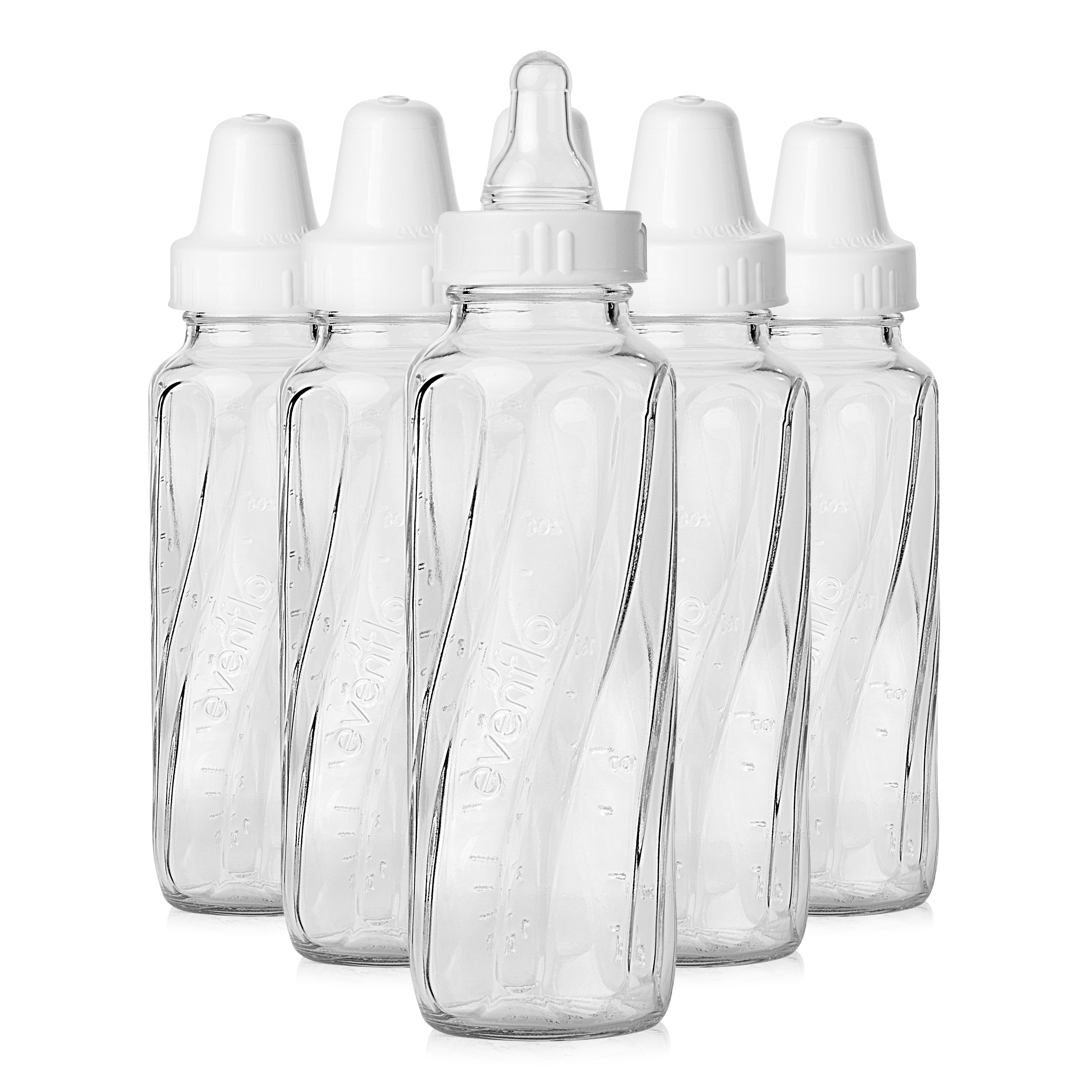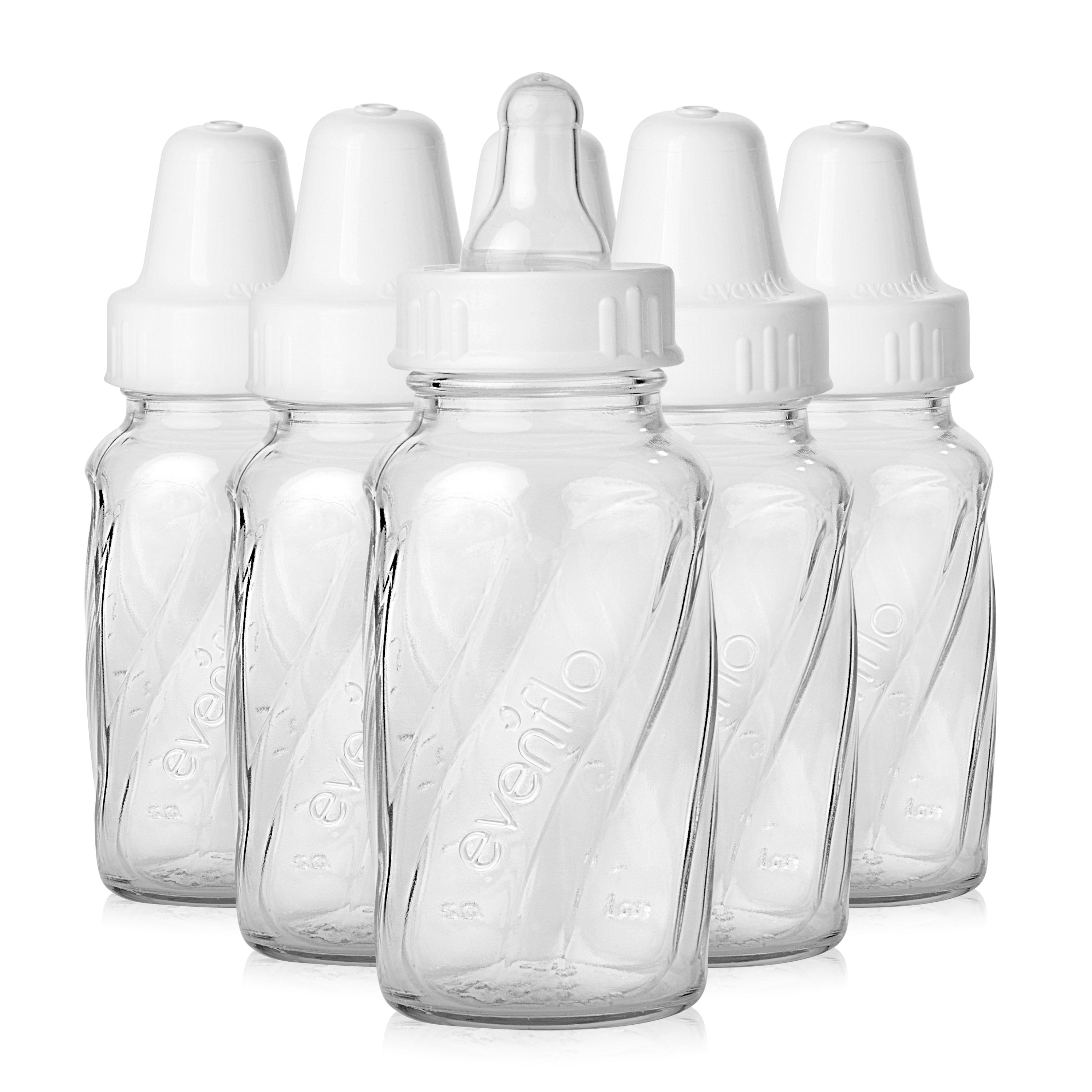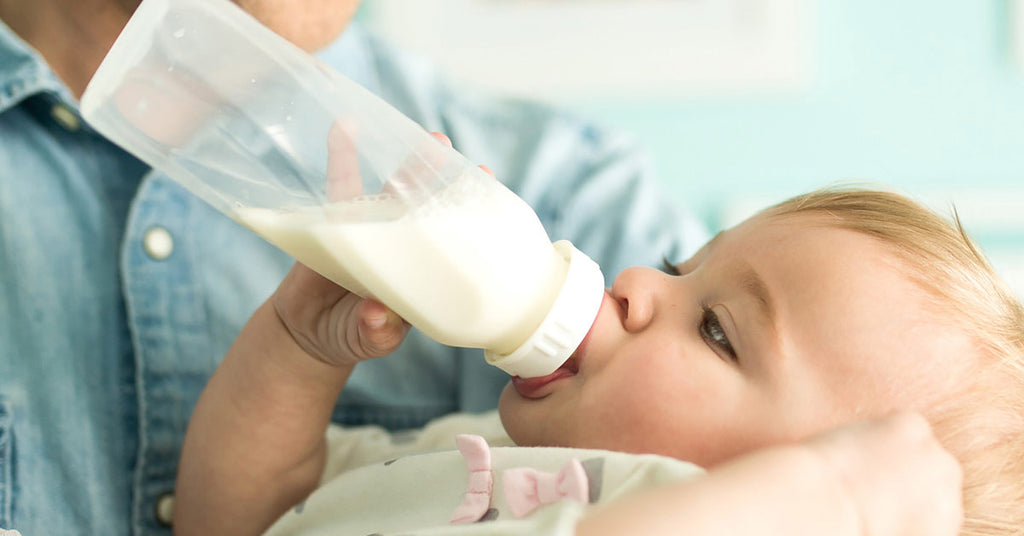
My Baby’s Bottle Drips — Why Dripping and Flow Rate are Different

How fast a bottle nipple drips when the bottle is held upside down is different than how fast the milk flows when a baby sucks on the nipple. Dripping rate is different than flow rate.
It is normal for bottles to drip until the air pressure inside the bottle matches the air pressure in the room. Once the air pressure is the same, bottles usually stop dripping. This typically takes five seconds or so. The temperature of milk can also affect how much a bottle drips; warmer temperatures drip faster.
Flow is measured through suction, not drips. To test flow rate, bottles are attached to a breast pump. Liquid is collected and measured. This measurement is used to compare the flow rate between various brands and models of bottles. In the book Balancing Breast and Bottle: Feeding Your Baby, Peterson and Harmer have studied flow rates and list the Evenflo Balance + Standard and Wide nipples as some of the of the slowest on the market.
If your baby doesn’t like latching onto a bottle nipple that is dripping, this does not mean the bottle flows too fast. You can control the dripping before baby latches.
- Consider not warming the milk quite as much.
- Hold your baby slightly reclined, not lying flat on his back.
- Hold the bottle so the nipple is empty of milk. Let your baby latch onto the empty nipple. Once your baby latches and begins sucking, tip the bottle so milk flows. Tip it back down if your baby appears overwhelmed. The bottle should equalize in pressure quickly, making it easier for your baby to suck and swallow for longer bursts comfortably.

